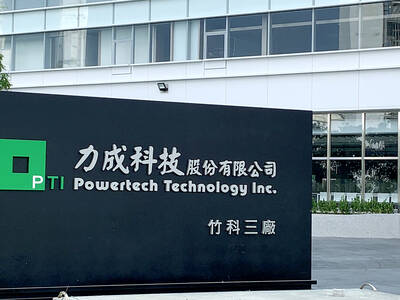As 10-year-old Lim Ding Wei (林鼎文) blasts alien space ships on a computer screen in his living room, his father Lim Thye Chean (林泰前) looks over his shoulder proudly.
“This is way beyond me already, because I do not know how to do 3D programming. I can’t teach him any more,” he said proudly as his son zips around in outer space fully rendered in 3D.
From being the teacher, Thye Chean, 40, a chief technology officer at a local firm, has now become the student of his son, whom local media reports fete as Singapore’s youngest programmer of mobile applications.
The game is the latest in Ding Wei’s repertoire of mobile applications, which include the hit Invader Wars 1 as well as art scrawler Doodle Kids, which has registered more than half a million downloads since it was posted on the iPhone App Store last year.
Fifth-grader Ding Wei is just one of a growing number of local program developers jumping on the bandwagon as analysts predict a boom in global mobile applications, or “mobile apps,” industry this year.
“I plan to be a software programmer,” said the boy, whose favorite subject in school is mathematics.
Mobile applications come with mobile phones and other hand-held devices, allowing users to access a wide array of Internet services while on the go, including finding one’s way in a shopping mall or playing games online.
FORECAST
Information technology research firm Gartner forecasts that revenue from mobile phone applications worldwide will hit US$6.8 billion this year, up 60 percent over last year.
Downloads from the massively popular Apple App Store also accounted for at least 99.4 percent of the 2.516 billion downloads of the mini-programs last year, Gartner said.
The recently released iPad tablet computer, which has already stoked interest among tech aficionados, can also run iPhone applications from the App Store, Apple chief executive Steve Jobs has said.
In addition to the upbeat figures, local developers have been heartened by local telecom firms Starhub and Mobile One breaking incumbent Singtel’s stranglehold on iPhone sales.
“With the other two telcos coming in, there is definitely a boom in the number of [iPhone] handsets going out,” said Sunny Koh, president of local game developer Personae Studios.
There is “huge potential” for the mobile application market to grow this year, he said.
Aside from games and quirky localized programs like cash machine locators and mall directories, developers are also creating applications for schools to aid students in subjects like creative writing and chemistry.
Education application developer Elchemi Education said that demand was growing as an increasing number of students and teachers got hold of the latest smartphone and gained access to mobile application platforms.
TAPPING IN
“A lot of teachers are exploring mobile devices and a lot of students have iPods and iPhones … so with the kids having these existing devices, the school would also want to tap on using them,” director Joanne Chia said.
The developer has rolled out applications in collaboration with schools and students.
One program called S!Plot consists of virtual wheels which can be spun to generate random scenarios for students to practice their creative writing skills.
“A lot of kids like the graphic interface, so we use the iPhone or iPod Touch to wow them,” Chia said.
In addition, the company has set up a club in conjunction with five secondary schools specializing in creating iPhone applications for their primary-level counterparts.
“The students can take their creativity and skills, like photo-editing, creating Web sites and all. Now they use those skills in iPhone [applications] development,” Chia said.
But Ding Wei is looking at home, rather than school, for his next project: an open-ended simulation game centered around the management of a condominium and modeled after his favorite game series, The Sims.
“I want to create a MyCondo game,” he said.

RUN IT BACK: A succesful first project working with hyperscalers to design chips encouraged MediaTek to start a second project, aiming to hit stride in 2028 MediaTek Inc (聯發科), the world’s biggest smartphone chip supplier, yesterday said it is engaging a second hyperscaler to help design artificial intelligence (AI) accelerators used in data centers following a similar project expected to generate revenue streams soon. The first AI accelerator project is to bring in US$1 billion revenue next year and several billion US dollars more in 2027, MediaTek chief executive officer Rick Tsai (蔡力行) told a virtual investor conference yesterday. The second AI accelerator project is expected to contribute to revenue beginning in 2028, Tsai said. MediaTek yesterday raised its revenue forecast for the global AI accelerator used

Taiwan Semiconductor Manufacturing Co (TSMC, 台積電) has secured three construction permits for its plan to build a state-of-the-art A14 wafer fab in Taichung, and is likely to start construction soon, the Central Taiwan Science Park Bureau said yesterday. Speaking with CNA, Wang Chun-chieh (王俊傑), deputy director general of the science park bureau, said the world’s largest contract chipmaker has received three construction permits — one to build a fab to roll out sophisticated chips, another to build a central utility plant to provide water and electricity for the facility and the other to build three office buildings. With the three permits, TSMC

The DBS Foundation yesterday announced the launch of two flagship programs, “Silver Motion” and “Happier Caregiver, Healthier Seniors,” in partnership with CCILU Ltd, Hondao Senior Citizens’ Welfare Foundation and the Garden of Hope Foundation to help Taiwan face the challenges of a rapidly aging population. The foundation said it would invest S$4.91 million (US$3.8 million) over three years to foster inclusion and resilience in an aging society. “Aging may bring challenges, but it also brings opportunities. With many Asian markets rapidly becoming super-aged, the DBS Foundation is working with a regional ecosystem of like-minded partners across the private, public and people sectors

BREAKTHROUGH TECH: Powertech expects its fan-out PLP system to become mainstream, saying it can offer three-times greater production throughput Chip packaging service provider Powertech Technology Inc (力成科技) plans to more than double its capital expenditures next year to more than NT$40 billion (US$1.31 billion) as demand for its new panel-level packaging (PLP) technology, primarily used in chips for artificial intelligence (AI) applications, has greatly exceeded what it can supply. A significant portion of the budget, about US$1 billion, would be earmarked for fan-out PLP technology, Powertech told investors yesterday. Its heavy investment in fan-out PLP technology over the past 10 years is expected to bear fruit in 2027 after the technology enters volume production, it said, adding that the tech would